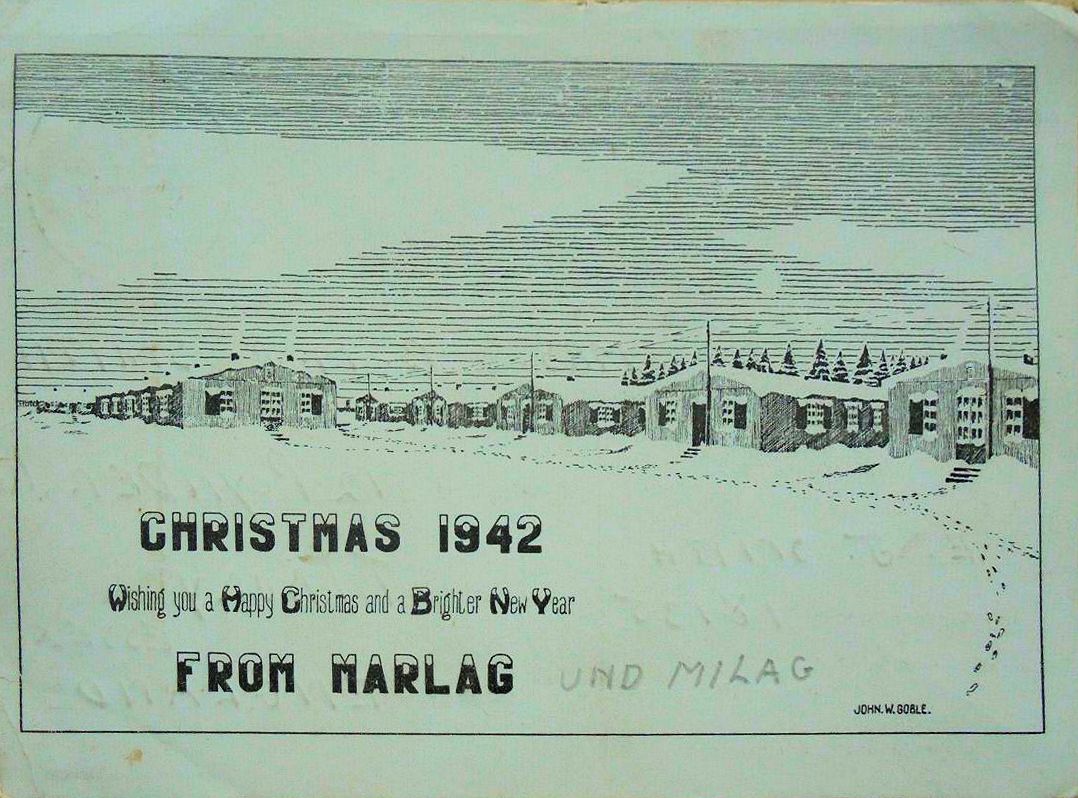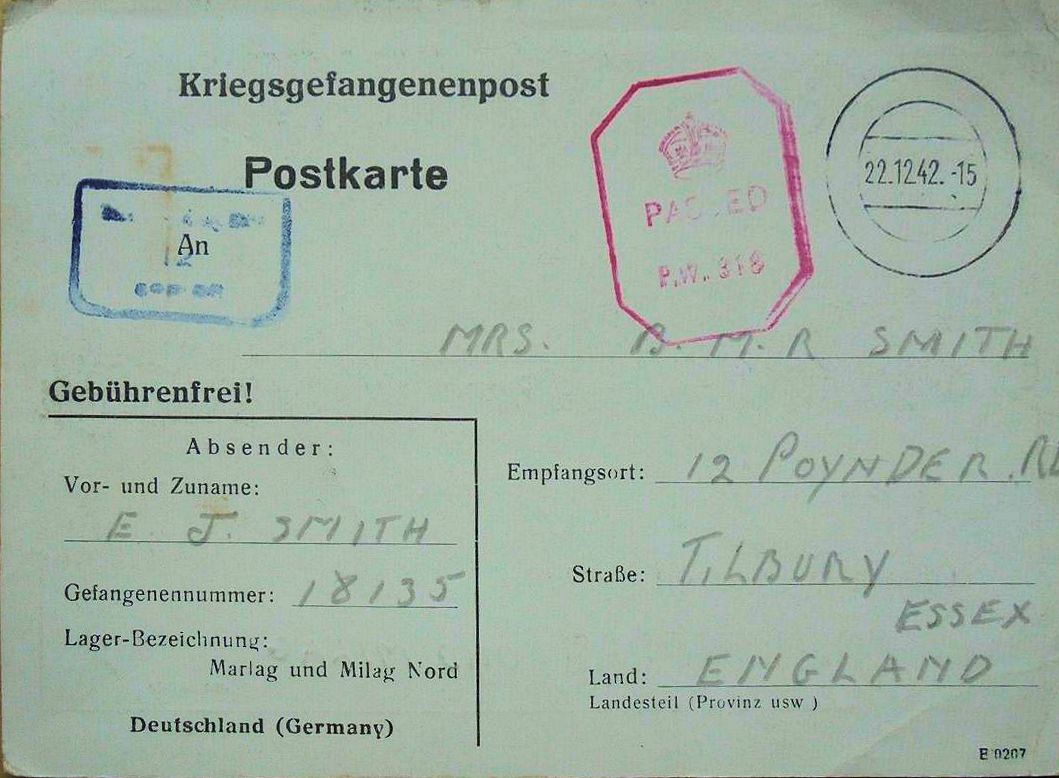1942, Germany, Marlag u. Milag Nord; Goble, WW II-Era Christmas POW Card


Description
1942, Germany, Marlag u. Milag Nord; Goble
NOTES
There is some detail available on the artist, J. W. Goble: He was later involved as a technical adviser with Albert, R.N., a 1953 POW escape film a/k/a Break to Freedom.
The film is based on a true story. "Albert R.N." was a dummy constructed in Marlag O, the prisoner of war camp in northern Germany for naval officers. The head was sculpted by war artist John Worsley (1919–2000), the body by Lieutenant Bob Staines RNVR, and Lieutenant-Commander Tony Bentley-Buckle devised a mechanism enabling Albert's eyes to blink and move, adding realism to the dummy.[2] "Albert" was used as a stand-in for a head count while a prisoner escaped and was used on two separate occasions.[3]
https://en.wikipedia.org/wiki/Albert_R.N.
On the evening of 31 August 1940, Express… departed Immingham to lay an offensive minefield off Texel, with cover provided by three destroyers of the 5th DF. At 23:07 it became clear that the ships of the 20th Flotilla had entered a German minefield when Express struck a mine abreast 'B' gun, losing her entire bow up to the bridge. The detonation killed 4 officers and 54 ratings; one officer and 7 crewmen were later rescued by the Germans.
https://en.wikipedia.org/wiki/HMS_Express_(H61)
warrent officer called John Willie Goble ... had been in the destroyer Express, blown up in a German minefield.”
Bentley-Buckle, A: Through Albert’s Eyes, Whittles Publishing, Ltd., 2021, p. 44.
viewable at
An additional example of GER4202, posted on same date, is reported by Pascal Lievin.
There is some detail available on the artist, J. W. Goble: He was later involved as a technical adviser with Albert, R.N., a 1953 POW escape film a/k/a Break to Freedom.
The film is based on a true story. "Albert R.N." was a dummy constructed in Marlag O, the prisoner of war camp in northern Germany for naval officers. The head was sculpted by war artist John Worsley (1919–2000), the body by Lieutenant Bob Staines RNVR, and Lieutenant-Commander Tony Bentley-Buckle devised a mechanism enabling Albert's eyes to blink and move, adding realism to the dummy.[2] "Albert" was used as a stand-in for a head count while a prisoner escaped and was used on two separate occasions.[3]
https://en.wikipedia.org/wiki/Albert_R.N.
On the evening of 31 August 1940, Express… departed Immingham to lay an offensive minefield off Texel, with cover provided by three destroyers of the 5th DF. At 23:07 it became clear that the ships of the 20th Flotilla had entered a German minefield when Express struck a mine abreast 'B' gun, losing her entire bow up to the bridge. The detonation killed 4 officers and 54 ratings; one officer and 7 crewmen were later rescued by the Germans.
https://en.wikipedia.org/wiki/HMS_Express_(H61)
warrant officer called John Willie Goble ... had been in the destroyer Express, blown up in a German minefield.”
Bentley-Buckle, A: Through Albert’s Eyes, Whittles Publishing, Ltd., 2021, p. 44.
viewable at
An additional example of GER4202, posted on same date, is reported by Pascal Lievin.
additional examples, posted 13, 17 and 29 December, all to GB, reported by Pascal Lievin
An additional example posted on 24 December 1942 is reported by Kieran Finnegan. Sent by Lt. G. Mitchell, RNR, who was captured when his ship, SS Malverian, was sunk on 11 July 1941.
More Links
Back to Military Postal History Main Page
Page Information
Page Layout Design Made Possible by:
Vanilla.
Webpage design by The Swanson Group
Updated 9/16/2022 (12/14/21)